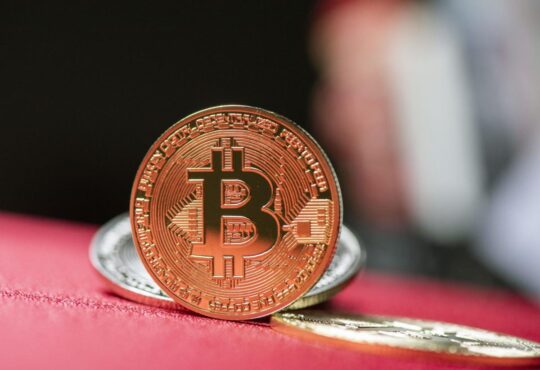
Cryptocurrency is an extremely high-risk and complex investment. Don’t invest unless you’re prepared to lose all the money you invest. You are unlikely to be protected if something goes wrong.
Forbes Advisor has provided this content for educational reasons only and not to help you decide whether or not to invest in cryptocurrency. Should you decide to invest in cryptocurrency or in any other investment, you should always obtain appropriate financial advice and only invest what you can afford to lose.
It’s hard to imagine two technologies more of the zeitgeist than artificial intelligence (AI) and cryptocurrency, so it’s no surprise that the two fields converged in the form of AI cryptocurrencies.
We’ve looked at some of the biggest AI cryptocurrencies by market capitalisation, according to CoinMarketCap*. But first, here’s a primer on what they are.
What are cryptocurrencies?
Cryptocurrencies are a form of digital currency. They can be spent or traded, but they’re not issued by central banks or stored in traditional financial institutions.
Instead, they’re decentralised. This means records of balances and transactions are’t controlled by banks or payment providers, instead they’re held by people who volunteer to keep track of everything using specialist software.
Volunteers participate because in doing so they get the opportunity to earn valuable cryptocurrency without having to pay for it.
Huge speculation on cryptocurrencies’ values has led to a boom in both the number and value of assets in the space over the last few years – peaking in November 2021 before crashing in the spring of 2022.
What is AI?
Artificial intelligence (AI) is a field of computer science enabling machines to make decisions based on data, increasingly mimicking human intelligence.
Recent popular examples include AI-generated artwork – where a program interprets user prompts, written in natural language, to create pieces of digital art, and ChatGPT, an application which is able to ‘write’ according to a brief submitted by the user.
In both cases, the outputs are close enough to what a real person might create that they could be mistaken for human creation, and these applications are getting increasingly sophisticated.
Use cases for AI are effectively limitless, and the technology has found its way into the cryptocurrency space.
What’s an AI cryptocurrency?
AI cryptocurrencies are tokens that power AI blockchain platforms such as The Graph and SingularityNET. Users spend tokens in order to use the platforms and the benefits of their integrated artificial intelligence.
We’ve looked at the 10 biggest AI crypto projects according to their market caps to see how AI is being used within the sector.
The Graph (GRT)
Market cap: £655 million
The Graph is a protocol for indexing and querying data from blockchains in a similar way that Google indexes and queries data from websites. Indexing blockchain data can be challenging, but The Graph aims to change that by organising data into smaller ‘subgraphs’.
Its native, Ethereum-based cryptocurrency, GRT, was worth £0.07 at the time of writing, down from its February 2021 peak of £2.09.
Injective (INJ)
Market cap: £482 million
Injective (INJ) is a finance-focussed AI crypto project, specifically designed to provide tools for building decentralised finance (‘DeFi’) applications.
Injective offers margin trading, derivatives and forex futures trading across blockchains.
Injective’s native currency INJ is used to validate transactions on the network, and to cast governance votes on the future direction of the project. INJ currently trades at £5.70, down from its May 2021 peak of £15.67.
Render (RNDR)
Market cap: £421 million
Render allows artists to harness the computing power necessary to render computer graphics from crypto miners who willing to rent out their graphics processing units (GPUs). The project was launched in 2017.
RNDR is the native currency of the Render project, and users spend it to access miners’ GPU power. The system operates on a proof of work consensus mechanism.
RNDR currently trades at £1.13, down from its November 2021 peak of around £5.80.
Akash Network (AKT)
Market cap: £230 million
Akash Network is a decentralised cloud computing platform that connects people who need cloud computing capability with those who can supply it, via the blockchain.
In essence, it’s a marketplace for computer processing power in the same way AirBnB is a marketplace for properties.
AKT, the native currency of Akash Network, currently trades at £1.06, down from its April 2021 peak of £4.74.
Oasis Network (ROSE)
Market cap: £206 million
Oasis Network describes itself as the ‘first privacy-enabled blockchain platform for open finance and a responsible data economy’.
In practice, the project is a proof of stake blockchain network designed to enable privacy-preserving open finance, in contrast to other blockchains that offer a relative lack of privacy.
ROSE, the native currency of Oasis Network, currently trades at £0.03, down from its January 2022 high of £0.41.
SingularityNET (AGIX)
Market cap: £171 million
SingularityNET is a blockchain platform that allows anyone to build, share and monetise AI services. It has an internal marketplace where users can browse and pay for AI services in the platform’s native cryptocurrency – AGIX.
Developers can make money from AI solutions and models without having to fully build apps for end users. Similarly, developers can buy AI solutions and models to use in their applications.
AGIX is currently worth £0.14. Back in January 2018, AGIX peaked at £1.34.
Ocean Protocol (Ocean)
Market cap: £154 million
Ocean Protocol is a Ethereum-blockchain-based platform that allows businesses and individuals to exchange and monetise data and data-based services. This might involve making data available to researchers and startups without the data being relinquished by the data holders.
OCEAN currently trades at £0.25, down from its April 2021 peak of £1.42
Fetch.ai (FET)
Market cap: £136 million
Fetch.ai is an AI and machine learning platform based on the blockchain. Fetch.ai is all about automating business tasks such as data processing and trading. Its native cryptocurrency, FET, is used to pay for transactions on the network.
At the time of writing, FET was valued at £0.16, down from its September 2021 peak of £0.87.
OriginTrail (TRAC)
Market cap: £69 million
OriginTrail is an AI crypto project aimed at the supply market industry which attempts to use blockchain technology to overcome common issues.
OriginTrail allows warehousing, distribution and retail to track the status of products in realtime, without the need for paperwork, using an indelible record on the blockchain. Users spend TRAC, the project’s native currency, to consume its services.
TRAC currently trades at £0.17, down from its November 2021 peak of £1.98.
dKargo (DKA)
Market cap: £65 million
dKargo is a blockchain that uses AI to solve trust issues within the logistics sector. It does this by providing participants with credible data, thanks to the indelible nature of blockchain technology.
dKargo’s native token, DKA, is currently worth £0.02, down from around £0.54 in the winter of 2021.
How do I buy AI cryptocurrencies?
Many AI cryptocurrencies can be bought using crypto exchanges such as Crypto.com and Coinbase, just like traditional cryptocurrencies like Bitcoin and Ethereum.
To trade, you’ll need to open an account – which often involves some identity verification steps, and deposit some fiat currency. You’ll then be able to navigate to the page of the AI cryptocurrency you want to buy within the exchange, enter the amount you’d like to buy and execute the trade.
How do I store AI cryptocurrencies?
Most exchanges offer a free crypto wallet facility in which to store your private and public keys – the credentials necessary to spend or trade your crypto assets. If you prefer, you can store your keys in an offline cold wallet.
Cold wallets are arguably more secure than hot wallets, since hackers can’t target them as easily. However, if you lose your login details for your cold wallet, you won’t get the support regaining access to your keys that you’d get with a hot wallet.
Are AI cryptocurrencies safe?
Whether AI cryptocurrencies are safe – either from hackers or from the volatility of the crypto market – depends on how you store them and your attitude to risk.
On the latter, no crypto currency is safe from market instability, and 2022 was the year in which crypto’s volatility was laid bare.
Bitcoin, for example, started the year at around £30,000 and ended it at around £13,000 (-56%), but not before rising to roughly £36,000 in March. Ethereum had a similar fate, starting 2022 in the region of £2,000 and ending the year at just under £1,000.
AI cryptocurrencies are no different. GRT fell from £0.44 in January 2022 to £0.06 (-86%) in December, while AGIX fell from £0.14 to £0.03 (-78%).
The UK’s financial watchdog, the Financial Conduct Authority (FCA), has repeatedly issued warnings about investing in cryptocurrency, saying people should be prepared to lose all the money they invest.
And as for hackers, crypto wallets and exchanges are likely to remain a target for criminals – leaving people’s assets at the mercy of the security that they and their exchanges implement.
Cold wallets are a hedge against hacks, but they become vulnerable once connected to a web-connected computer.
Meanwhile, exchanges continue to be attacked. 483 Crypto.com users were hacked last year and lost assets worth up to $35m. Exchanges after bolstering their security measures as hackers expose weaknesses, but it’s a cat and mouse game that looks certain to continue.





